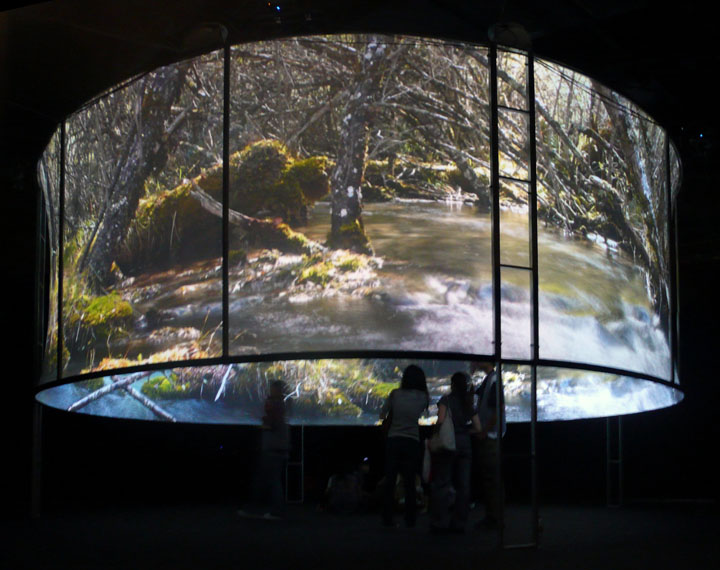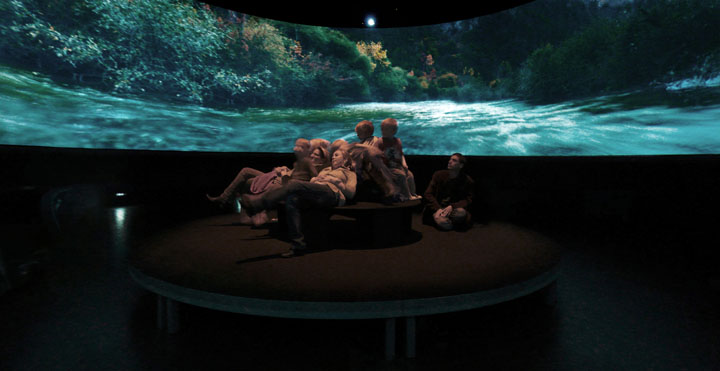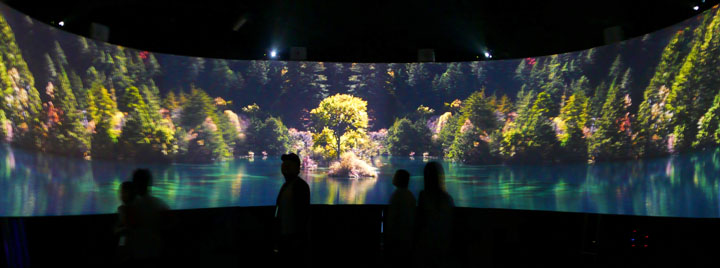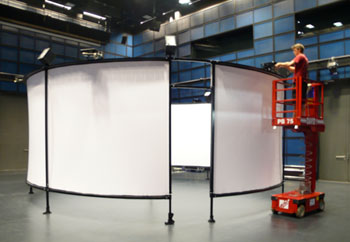
 |
 Parallaxe #2 (Bach), Installation setting at Shanghai Museum for Science and Technology, China, October 2008 |
||
| PARALLAXE series of four panorama videos, illusions Matthias Fritsch 2008 sounddesign by B. Oswald and Matthias Fritsch Production by Matthias Fritsch and ZKM | Institute for Visual Media VIDEO DOCUMENTATION PRESS MATERIAL TECHNICAL RIDER |
||
 Parallaxe #1 (Fluss), Installation shot at ZKM_Medientheater, Karlsruhe, Germany, April 2009 watch preview (Quicktime): 360 degree and total view (big pano screen) |
||
 Installation shot of Parallaxe #2 (Bach) watch preview (Quicktime): 360 degree and total view (big pano screen) videostill (size 8605 x 1040 pixel) |
||
 Installation shot of Parallaxe #3 (Kaskaden) watch preview (Quicktime): 360 degree and total view (small pano screen) |
||
 Installation shot of Parallaxe #4 (Blauer See) watch preview (Quicktime): 360 degree and total view (small pano screen) |
||
Parallaxe and the Sublation of Natural Beauty |
||
There has been plenty of speculation about the question of taste and of the aesthetic. Before it was discredited as a marker of social distinction, the so-called "aesthetic state" was considered the criterion of art for a long time. Apart from our cultural and social background, and aside from how and the reasons by which we identify or distinguish ourselves through taste, most human beings are still deeply moved when they experience something as truly "beautiful" or "sublime". |
the subject of natural beauty, as was the case in romantic painting. Generating images does not alter the emptiness of natural beauty, since natural beauty has always been empty and can only therefore become the object of "interesseloses Wohlgefallen" (disinterested pleasure), the stimuli of aesthetic thought. |
|
| PanoramaTechnology: ZKM | Institute for Visual Media, Karlsruhe The PanoramaScreen is based on Jeffrey Shaw’s interactive panoramic cinema research. The Panorama Display Software was conceived and developed by Bernd Lintermann at the ZKM | Institute for Visual Media. >>> Technical Rider <<< |
 Installation of the Panoscreen |
|
| related works: 2011  I'll be watching you... I'll be watching you...2010  Dance Piece No.2 Dance Piece No.2 2007  Deer Pass Deer Pass2005  Greek Story Greek Story2003  Hidden / Versteckt Hidden / Versteckt2003  Gbush Gbush |
||